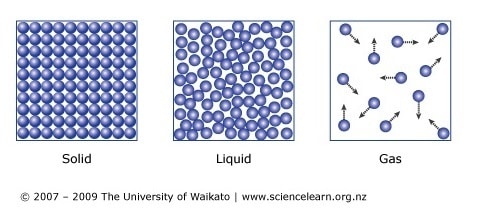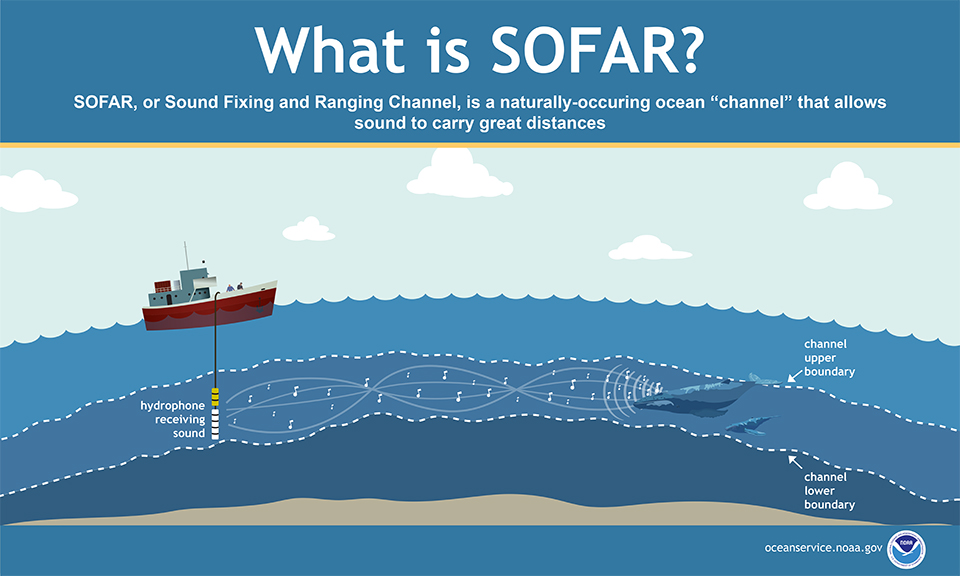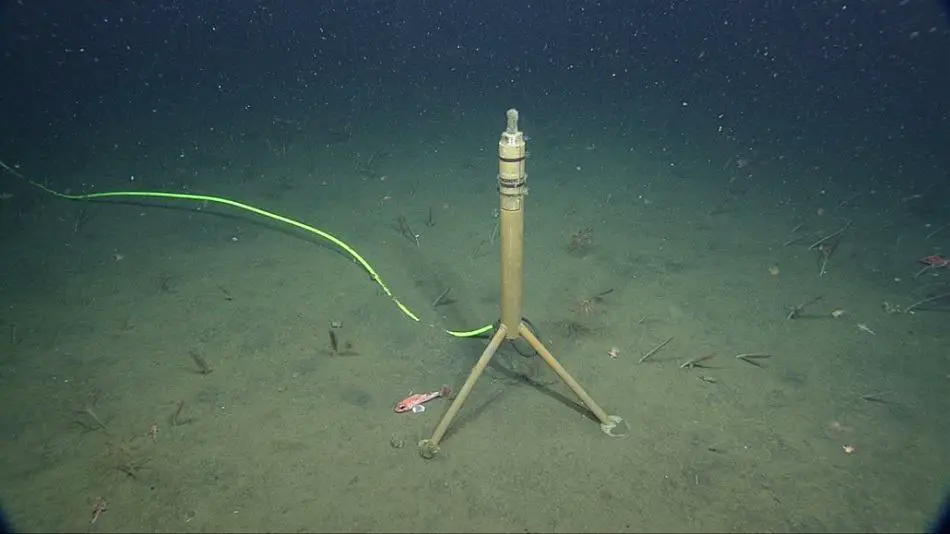Did you ever wonder why sound seems to be amplified over water? Sound waves on top of the water seem to be louder than overland. Why does this happen, Does Water Amplify Sound, How?
Yes
- Higher density enhances sound transmission
- Underwater sound travels faster & farther
- Enclosed spaces resonate sound waves
- Reflection & refraction concentrate sound
- Hydrophones detect H2O sound
- Bubbles resonate/amplify sound
- Ice conducts sound over distances
- SOFAR channel guide sound, with less energy loss
Remember those old World War II movies when the crew in a submarine is nervously waiting for an enemy ship to cross paths with them and extremely quiet in the area because they might be heard? Even the tiniest whispers from the guys on the Sub could be amplified and heard for miles.
Introduction:
Does Water Amplify Sound? This interesting topic combines the serene elements of water with the science and often overlooked, physics of sound. Despite the notable absence of ears, even the bluest depths of the ocean hide countless acoustic secrets. Join us as we navigate these uncharted waters, deciphering how sound is amplified amid the aquatic blue, and perhaps surprising you with sounds louder than ever beneath the surface.
Does Water Amplify Sound
At the height of World War II, scientists tested a theory that low-frequency sound could travel long distances in the deep ocean. They deployed a hydrophone from their research vessel, which was anchored off Woods Hole, Massachusetts. Some 900 miles away, another ship lowered a four-pound explosive to a specific depth below the ocean surface. Once detonated, the explosion propelled pulses of sound that traveled 900 hundred miles from one ship to the other. That’s nearly the distance from Washington, DC, to Des Moines, Iowa!
For the first time, researchers heard what they termed SOFAR, or a Sound Fixing And Ranging transmission. As the scientists noted, “The end of the sound channel transmission was so sharp that the most unskilled observer couldn’t miss it.”
Water affects sound waves in several different ways. They can move several times faster than sound waves move through the air. However, because the human ear evolved over millions of years to hear in the air, water tends to muffle sounds that otherwise would be clear in the air. Water can also “bend” sound, sending it on a zigzag path instead of a straight line.
Sounds travel in the form of waves resulting from vibrations coming from objects. If by chance, any object is struck or moves, it creates a vibration. Disturbances also cause the surrounding molecules of a medium — air, liquid, or solid to vibrate. In turn, the ears receive the tremors of these different substances, which send signals to the brain. These are interpreted as sounds.
How Sound Is Amplified Underwater
Have you submerged yourself in a pool and heard the muffled sounds in the water? Did you realize that the water influenced the sounds you heard? Water can amplify sound using the mechanical energy of a water jet. This statement might seem far-fetched, but it’s a scientific fact that water affects sound waves to an unbelievable extent.
The process of amplification necessitates that sound levels escalate. So how specifically does water contribute to the amplification of sound? It primarily uses its own properties. Sound is mechanical energy, and requires a medium through which to travel. This medium can be air, or for amplified sound in this exact context, it is water. Water, being denser than air, provides a more efficient medium for the transmission of sound. This efficient transmission inevitably leads to amplified sound.
Think about marine mammals – whales, dolphins, and seals, for example. These marine mammals utilize sound to communicate with each other, often embraced by the dense water around them. It’s an intriguing phenomenon of how these aquatic animals take advantage of the water’s properties to make their messages heard loud and clear. Their communication abilities perfectly signify just how one can amplify sound using the mechanical energy of a water jet.
Quantifying sound levels in water is also significantly different than how we measure them in the air. In water, sound levels increase, because the vibrations or sounds they produce are stronger in water. Amplified sounds can travel faster and over greater distances in water than in air. This is why underwater sensors can pick up sounds from miles away and why submarine sonar is such a precise tool: it relies on the fact that water affects sound waves importantly, enabling amplified sound. A testament to the claims that one can amplify sound using the mechanical energy of a water jet.
Sound is a topic that is constantly under research, primarily due to its prevalent connection with virtually everything around us. Water, on the other hand, is a resource that we depend upon in our daily lives. It is only apt that we delve deeper into how these two elements interact, especially in terms of sound amplification.
Understanding such a complex relationship between water and sound, between the amplified and the medium of amplification is not that complicated. The impact that water has on sound and the contributions it makes to help us hear amplified sounds is a very interesting one that’s used every day in the world on a giant scale.
The Speed and Refraction of Sound Waves: How Water Influences the Speed of Sound
In simple terms, when sound travels, it creates waves that move particles in the direction of the wave and this particle movement is faster in water than in air. Experimentation shows that sound waves travel around four times faster in water than in air. This marked change in speed intrigued many and thus led us down the path of understanding how sound is refracted in water compared to air.
Refraction, in essence, is the change in direction and speed of a wave when it passes from one medium to another, in this case, from air to water. This change in the speed of sound and consequent refraction is due to the density of the medium. Since water is denser than air, sound waves can push water molecules together more efficiently, resulting in a faster travel speed. The science behind this phenomenon is both endless and captivating.
Down to the nitty-gritty now, what does this mean when sound reaches our ears underwater? It means that sounds can not only be heard more clearly underwater but also from a greater distance. This is perhaps why in the noisy world of the ocean, marine animals have evolved to utilize sound for communication, navigation, and even hunting. Yes, sound indeed moves several times faster through water than air, an intriguing nugget of science we thought you’d like to share.
Since most speeds are considerably different, sound waves bend a significant amount as they enter the water, impacting how they behave and ultimately how the sound reaches us. This bending – or refraction – of sound can result in fascinating distortion effects, making sounds seem closer or further away than they are!
In the air, we are also no strangers to sound refraction. It prominently occurs when sound travels through layers of air that have different temperatures. But the intrigue magnifies underwater because the speed of sound varies more significantly with changes in water pressure and temperature, compared to air. This makes refraction effects underwater quite diverse, leading to an intricate soundscape for those dwelling beneath the waves.
So, to sum it all up, sound does move several times faster through water than air and this influences the behavior of the sound waves. The speed is increased, the path is changed through refraction, and this all leads to a unique way that sound travels and reaches us in water.
The Speed of Sound Waves in Water
Even though sound waves in water and sound waves in air are somewhat similar, the way that Sound Levels in water and sound levels in the air are reported is different, and comparing sound levels in water and air must be done carefully. Normally sound levels are measured in DBS. Sound pressures for transient signals are sometimes given as peak or peak-to-peak pressures, rather than mean-square pressure.
When we describe a sound as loud or soft, scientists say that the sound has a high or low amplitude or intensity. Amplitude refers to the change in Pressure- which is the amount of force per unit area measured in units of atmospheres (atm) as the sound wave passes by. Amplitude is the maximum distance that a vibrating particle moves from its Equilibrium or the rest position of the particles in the medium and how much the Medium is disturbed.
Medium means substance or material that carries or transports the Wave from its source to other locations. In the open ocean, the medium through which the wave travels is ocean water. The average amount of sound power or (sound energy per unit of time) is transmitted through a unit area in a specified direction. The unit of intensity is watts per square meter.
For simplicity, the magnitude of the intensity is often referred to as the intensity, without specifying the direction in which the sound is traveling. If you increase the amplitude of a sound, you are making it louder, just as you do when you turn up the volume on your radio. If you decrease the amplitude, you are making the sound softer, just as when you turn down the volume.
Sound In Air- In a gas-like air, the molecules are spread far apart so they travel further before they bump into one another. There is not much resistance to movement so it doesn’t take much to start a wave, but it won’t travel as fast. The same vibration in all three mediums would take the least amount of energy to get going.

Sound In Water–In water, the molecules are closer together and because of this, they can quickly transmit energy through vibration from one particle to the next.
This equates to more than 4x faster than the molecules of air medium. But it takes more energy to start the vibration. The same vibration would take more energy to start moving than in the air.
Sound In Solids– In solids are even tighter and closer together linked by chemical bonds so the wave travels even faster than it does in either liquid or air, but again just as in water, you need quite a lot more energy to start the wave at the beginning than air.
Another important influence on sound waves and how they travel is the temperature of the water. Warmer surface water in the ocean is less dense so sound traveling through the water to the surface will refract and become trapped, a phenomenon referred to as a surface duct.
Understanding the Role of Temperature in Sound Speed in Water
Understanding the role of temperature in the speed of sound in water is a fascinating study. Sound waves work by vibrating your eardrum, creating the perception of sound. In water, these vibrations can be more potent. Because the sound waves only vibrate your eardrum, the speed of sound in water can be faster than in air. Why is this the case? It’s all due to the temperature of water and air.
The speed of sound is influenced by air temperature. When sound travels in air, air temperature plays a crucial role in determining how swiftly it moves. This is due to the way molecules react to different temperatures. The warmer the air temperature, the less resistive the medium and the faster the sound speed. However, the process is quite different in water.
In water, sound speed isn’t as affected by water temperature as it is by air temperature. While the temperature of water does influence the sound speed, the influence isn’t as dramatic. Interestingly enough, when sound travels through water, it can sometimes move faster than when it travels through air.

Among the factors that influence how fast sound travels in water, temperature isn’t high on the list. Sure, hot water carries sound faster than cold water, but not because the water molecules vibrate more quickly. Rather, the speed difference is due to the refraction, or bending, of the sound waves.
When sound travels through water, the sound waves only vibrate your eardrum once they reach it. The speed of their journey can be affected by many factors, including the temperature of the water, but it is refraction that significantly affects their travel speed.
Why does refraction happen and how does it affect how sound travels in water? Refraction of sound waves occurs when temperature variations cause layers of different densities in the water. Sound travels faster in warmer water because the particles are more active, and thus, the sound waves meet less resistance. Conversely, in cooler water, sound travels slower because the particles are less active.
The speed at which sound travels through water can be quite surprising, especially when you consider the role of temperature. While air temperature significantly impacts the speed of sound, water temperature’s role is notably less pronounced.
From the way sound waves vibrate your eardrum to the speed at which they travel through various mediums, studying sound speed is a journey full of surprises. If you’ve ever wondered why muffled sounds become clear when you submerge yourself in water or why whales’ songs can be heard miles away, now you have your answer – it’s all due to how temperature affects sound speed, and refraction as sound travels in water!
Hydrophone Water Microphone: Capturing Sound Refraction in Water
When we’re discussing the tutorial sound of how water amplifies sound, a vital component comes into view, the hydrophone water microphone. So, what do we mean by a hydrophone?
It’s an underwater sound device or microphone. Its primary purpose is capturing, and this can include both ocean sound and the way sound travels underwater. The underwater world is a unique place where sound travels differently compared to the air-filled environment we’re used to. Sound waves, the agents of sound transmission, behave differently when we move from gas to a liquid medium, like water.
Moreover, when thinking about how our tutorial sound would capture this, we must consider both the speed and the sound wave refraction. The underwater sound world is amplified, becoming clearer but also distorted due to the water’s dynamics. For those of us who enjoy the soothing effects of the ocean sound, these factors play a crucial part in what we’re hearing.
Sound travels at a different speed underwater, as we’ve touched upon briefly. This is because water, compared to air, is much denser. So, it’s easier for those sound waves to move and travel. However, the speed also depends on the temperature, salinity, and pressure. So, it’s not always a straightforward answer when talking about the sound pressure in water.
Continuing with our tutorial sound, you may wonder ‘Does sound get lost or absorbed by water?’ The answer is, surprisingly, no! While sound can be absorbed to an extent, a lot of it is reflected on the water’s surface, or refracted, before it has a chance to escape into the atmosphere.
Sound waves are not lost. Instead, they get rerouted, leading to interesting noise sound patterns under the water. So, the sound’s journey is much more complex, with its direction constantly changing due to the refraction and reflection on the surface.
Sound pressure, which refers to the continuous underwater force that sound waves exert, plays a vital role too, and can greatly affect the amplified ocean sound we hear. For those who work in underwater acoustics, this is a prime area of interest. The hydrophone water microphone can record these pressure changes and display them as waveforms, allowing scientists to understand the noises and sounds that take place under the sea.
In sum, it’s a fascinating world beneath the water’s surface, filled with amplified sound waves and unique sound behavior. Thanks to the hydrophone water microphone, we can capture and understand these phenomena better, leading to an increased understanding of underwater sound and noise sound patterns. So, the next time you’re listening to the calming sounds of the ocean, remember there’s much more to it than meets the ear!
What is SOFAR
SOFAR (Sound Fixing and Ranging) is an acronym that refers to a phenomenon related to underwater sound propagation. The SOFAR channel, also known as the Deep Sound Channel (DSC), is a horizontal layer of water in the ocean where sound waves can travel for long distances with minimal loss of energy. This phenomenon occurs at a depth where the speed of sound is at its minimum due to a combination of temperature and pressure conditions.
The SOFAR channel acts as a waveguide for sound, allowing it to propagate over vast distances with little attenuation. This unique property has practical applications, especially in underwater communication and monitoring. For example, submarines and marine mammals like whales use the SOFAR channel to communicate over long ranges. Additionally, scientists use hydrophones placed in the SOFAR channel to detect and study natural phenomena such as earthquakes, underwater volcanic activity, and marine mammal vocalizations.
Exploring Water Temperature’s Influence on Sound Speed and Refraction
When sound waves travel through water, the speed and refraction of these waves are heavily influenced by the water’s temperature. Essentially, as the temperature changes, so does the speed at which sound travels. But, the question is, how does this happen and why? To answer this, we have to look into the properties of sound waves and how they interact with different temperatures.
But first, let’s add some context. A study of sound in water reveals that it’s not as simple as sound just ‘moving faster’ in warmer water. The sea and ocean, for example, are not uniformly warm. Surface temperatures fluctuate while the deeper sea remains consistently cold. This variability in temperature heavily impacts the speed at which sound travels. But how exactly does temperature influence the speed and refraction of sound waves?
Understand this, sound waves are vibrations that move through a medium, be it air, water, or even solid matter. The speed at which these waves travel through the medium depends on the elasticity and density of that medium. In this case, our medium is water, and as we’ve established, the temperature can significantly alter its density.
 When water is heated, the molecules speed up and spread out, decreasing the water’s density. Because there are fewer molecules to get in the way, sound waves can travel more quickly. Conversely, when water cools, its molecules slow down and pack together, increasing the density, which in turn slows sound’s speed.
When water is heated, the molecules speed up and spread out, decreasing the water’s density. Because there are fewer molecules to get in the way, sound waves can travel more quickly. Conversely, when water cools, its molecules slow down and pack together, increasing the density, which in turn slows sound’s speed.
This period when sound’s speed alters is what we refer to as refraction. Sound waves refract, or bend, as they pass from water of one temperature to water of another. This is how and why the speed of sound differs based on temperature.
In the sea and ocean, where temperature gradients exist, sound waves can refract and follow a curved path instead of traveling straight. This phenomenon can influence how sound travels underwater, diverting it from a straight path.
This is especially prominent in the ocean, where sound can get ‘trapped’ in what is known as a ‘sound channel’, a layer of water in the ocean where the speed of sound is at a minimum. The sound waves get refracted back towards this layer whenever they try to escape, effectively amplifying the sound over long distances.
Furthermore, to study this phenomenon more clearly and accurately, scientists use devices like hydrophones, and underwater microphones that help capture and understand sound refraction in water. Thanks to this technology, researchers can collect and study data about underwater acoustics, revealing the intricate, fascinating, and yet invisible dance of sound waves, temperature, and water. From these studies, we can answer many questions about sound behavior in water, its speed, and the formidable refraction phenomena related to temperature gradients.
So, here’s our answer – yes, water does amplify sound, and it does this through complex processes of speed alterations and refractions caused by temperature changes. The sea isn’t just a body of water, but a dynamic soundscape where temperature, sound waves, and distance interplay to create nature’s unique underwater symphony.
Conclusion:
In conclusion, water does amplify sound significantly due to its density and elasticity. The increased speed of sound in water contributes to better clarity and volume when compared to air. This phenomenon is fascinating for enthusiasts of physics and acoustics alike. Yet, it’s worth considering implications such as impact on marine life. Understanding how sound behaves underwater will continue to be a crucial aspect of several disciplines. From oceanic studies to naval technology, the amplification of sound in water is more than a curious fact; it’s a scientific reality with wide-ranging applications.

References:
NOAA- How far does sound travel in the ocean? from the NOAA
Seafloor-Complete Hydrographic Survey Solutions
FAQ’s
Q: Does water amplify sound?
A: Yes, water can amplify sound significantly. It makes use of its own properties and the mechanical energy of a water jet to amplify sound.
Q: How does water work as a medium for sound transmission?
A: Water, being denser than air, provides a more efficient medium for the transmission of sound. This efficient transmission inevitably leads to amplified sound.
Q: How do marine mammals use the properties of water for communication?
A: Marine mammals like whales, dolphins, and seals utilize sound to communicate with each other, often embraced by the dense water around them. Their communication abilities signify how one can amplify sound using the mechanical energy of a water jet.
Q: How does the temperature of water affect the speed of sound?
A: While the temperature of the water does influence the speed of sound, the impact is not as dramatic as it is in air. The speed difference in water is due to the refraction of sound waves, which occurs when temperature variations cause layers of different densities in the water.
Q: What is a hydrophone and how does it capture underwater sound?
A: A hydrophone is an underwater sound device or microphone primarily used for capturing ocean sound and the way sound travels underwater. It can record changes in sound pressure and display them as waveforms, helping understand the noises and sounds that occur under the sea.
Q: How does the temperature gradient in the sea or ocean impact the speed of sound?
A: In the sea and ocean, where temperature gradients exist, sound waves refract and follow a curved path instead of traveling straight. This phenomenon can influence how sound travels underwater, diverting it from a straight path. These sound waves can even get ‘trapped’ in what is known as a ‘sound channel’, a layer of water in the ocean where the speed of sound is at a minimum.


